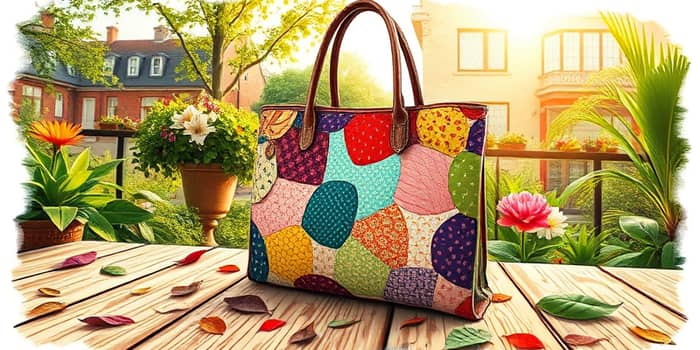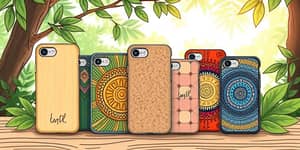Every day we reach for a bag—on errands to the grocery store, on the commute to work, or simply as a fashion statement. Yet the choices we make in bag materials and design can echo for centuries in our landfills and oceans. In this article, we will explore how small daily choices can spark a global environmental renaissance. By blending sustainability with contemporary style, you can carry goods, express your personality, and reduce your carbon footprint all at once.
The environmental toll of single-use bags
Traditional plastic bags have earned their negative reputation for a reason. They can take anywhere from 500 to 1,000 years to break down in landfills, and they rank among the top ten items found in beach cleanups worldwide. Every minute, more than a dump truck load of plastic enters our oceans, threatening marine species that ingest or become entangled in the debris. Beyond visible litter, plastic bag production demands about 12 million barrels of oil each year, driving the fossil fuel cycle forward.
Leather and synthetic materials offer no clear refuge. Leather manufacturing contributes to deforestation and often involves harmful tanning processes that pollute waterways. Nylon and polyester bags, while durable, refuse to biodegrade in landfills. Their environmental consequences may be less immediately obvious than those of disposable plastic, but their persistent presence in landfills extends our ecological burden far into the future.
Comparing the footprint: Bag types in numbers
To grasp the scale of the challenge, it helps to see how different bag types measure up in water use, carbon emissions, and lifespan.
This table underscores a critical truth: reusable materials only win if used consistently. A cotton bag’s high water footprint demands dozens or even hundreds of reuses to offset its creation impact, whereas a sturdy reusable plastic bag can break even after a dozen runs to the store.
What makes a bag truly eco-friendly
When evaluating your next everyday bag, look beyond logos and marketing buzzwords. A genuinely sustainable option combines the right materials with thoughtful lifecycle planning. Consider these five attributes:
- Upcycled textiles and recycled plastics
- Organic fibers like jute or hemp
- Durable designs for long-term use
- Biodegradability or full recyclability
- Fair labor and ethical certification
Upcycling diverts discarded fabrics from landfills, while organic jute and hemp grow with fewer pesticides. Durability ensures you won’t replace your bag after just a handful of uses, and clear end-of-life strategies means materials can re-enter the production cycle.
When eco meets chic
Gone are the days when sustainable bags looked like a compromise in style. Today's designers blend form and function seamlessly, offering bags in contemporary silhouettes, vibrant prints, and sophisticated neutral palettes. Imagine a versatile tote with a geometric pattern, or a sleek crossbody crafted from recycled ocean plastics. These bags aren’t just conversation starters—they are everyday workhorses that fit into any wardrobe.
Brands are also exploring custom features, from adjustable straps to modular compartments, so your bag adapts to grocery runs, laptop carry, or weekend getaways. By choosing a modern eco-friendly bag that reflects your personality, you reinforce the habit of reaching for it day after day, magnifying its positive impact on the planet.
Tips for choosing—and using—it right
Even the most sustainable bag can fall short if it ends up stashed in a closet. Follow these practical tips to maximize both style and environmental benefit:
- Commit to regular reuse rather than occasional use
- Match your bag to your personal style for frequent use
- Avoid accumulating unused bags and clear out old ones
- Look for brands with transparent supply chains
- Explore local artisans for unique sustainable designs
By integrating your bag into everyday life—whether it’s your go-to for markets, gyms, or laptop transport—you ensure that its creation footprint is thoroughly justified.
Join the movement for sustainable style
As consumers, each choice sends a powerful message to the fashion and manufacturing industries. In a recent survey, 85% of Americans agreed that plastic waste pollution demands urgent political action. When you invest in an eco-friendly everyday bag, you align with millions of individuals calling for change and supporting businesses that prioritize the planet.
Your bag becomes more than a vessel for your belongings; it transforms into a statement of values. It embodies responsible innovation in fashion, sparks conversations, and inspires others to rethink their daily habits. Whether you’re commuting, attending a workshop, or meeting friends for coffee, your bag can silently advocate for cleaner oceans, sustainable fibers, and ethical labor practices.
The path toward a healthier planet is paved with thousands of everyday decisions. By choosing the right bag—and using it consistently—you play an essential role in reducing waste, lowering carbon emissions, and fostering a culture of sustainability. Let your next carry-all carry more than items: let it carry hope for tomorrow’s world.
References
- https://www.bagzdepot.com/blog/the-rise-of-sustainable-bags-ecofriendly-choices-for-a-greener-future/
- https://earthwarriorlifestyle.com/blogs/news/he-environmental-impacts-of-bags-the-truth-behind-paper-plastic-and-reusable-alternatives
- https://rocksidebags.com/blogs/news/sustainable-style-choosing-eco-friendly-bags-for-everyday-use
- https://www.greenmatch.co.uk/blog/plastic-paper-or-reusable-bag
- https://www.cbsnews.com/miami/news/reusable-bags-created-new-problem-in-fight-for-sustainability/
- https://www.torekkagreen.com/blogs/news/the-ecobag-production-process
- https://www.worldwildlife.org/initiatives/plastics
- https://www.kelleemaize.com/post/sustainable-bags-that-youll-want-to-use-on-the-daily










